The Complete Olympic Experience
Mt. Olympus is the crown jewel of Olympic National Park, but many Seattlites have never ever seen it. With the exception of Hurricane Ridge, it is not visible from any major road. Despite a modest height of just under 8000 ft, it has extensive glaciation due to its proximity to the Pacific Ocean, rivaling larger Cascade volcanoes like Mt. Adams and Glacier Peak. The journey to climb Olympus is a long one, so with a three day weekend and great weather forecast, Daniel and I decided to finally make the long trek out to this iconic peak.
The Rainforest
I picked Daniel up Saturday morning and we drove out to the Quinalt Ranger Station, arriving just before it opened. We were concerned about getting a permit since we had heard that they ran out during Memorial Day Weekend, but this was a normal weekend and it was much less crowded. There was still more driving after this, all the way out to the coast and then back inland along the Hoh River. We left our homes around 5 am, but did not start hiking until after 10 am! It is a long hike and a long drive to Olympus!
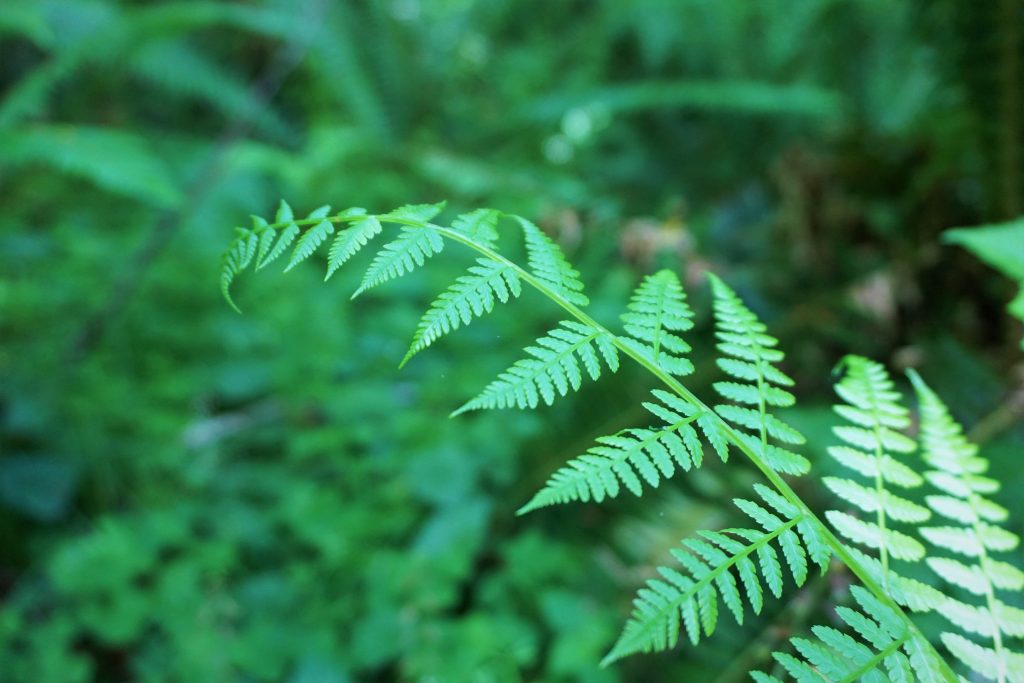
The Hoh River Trail was very chill and green around us. Miraculously, it was also not muddy, but it has been an unusually dry year in the Western Olympics. While many river trails in the Cascades have a lot of PUDs (pointless ups and downs), this one is quite flat, allowing for fast, easy travel.

You might wonder how the Hoh River is any different than our other wet, green mountain forests. Somehow, the Hoh has even more green and vivacity than the other forests. Endless moss covers the trees and carpets the ground. Ferns grow out of fallen logs. And there are so many huge trees that sometimes they just join together, twisting and growing at all kinds of strange directions.
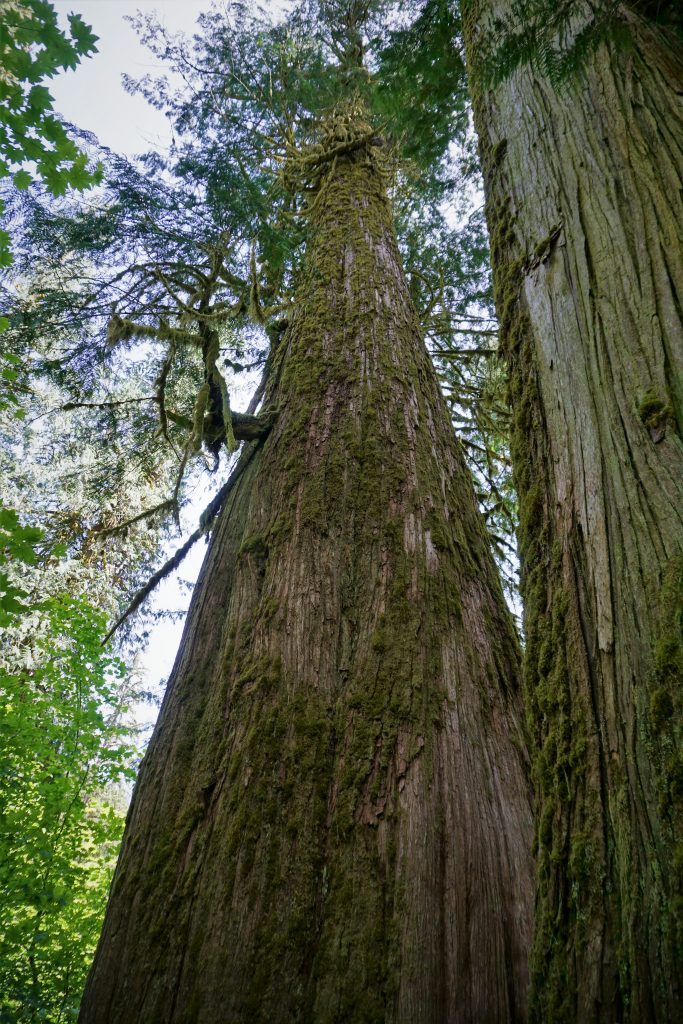

There was once an author, Gordon Hempton, who searched the US for the “quietest” spot in the country, a place void of human sounds like cars, people, and airplanes. He ended up deciding on this spot in the Hoh Rainforest. His book, “One Square Inch of Silence”, has become pretty famous and so has this spot. Some people come all the way to the Hoh Rainforest just to visit this spot. Since it was on our way, we decided to also try to find it.
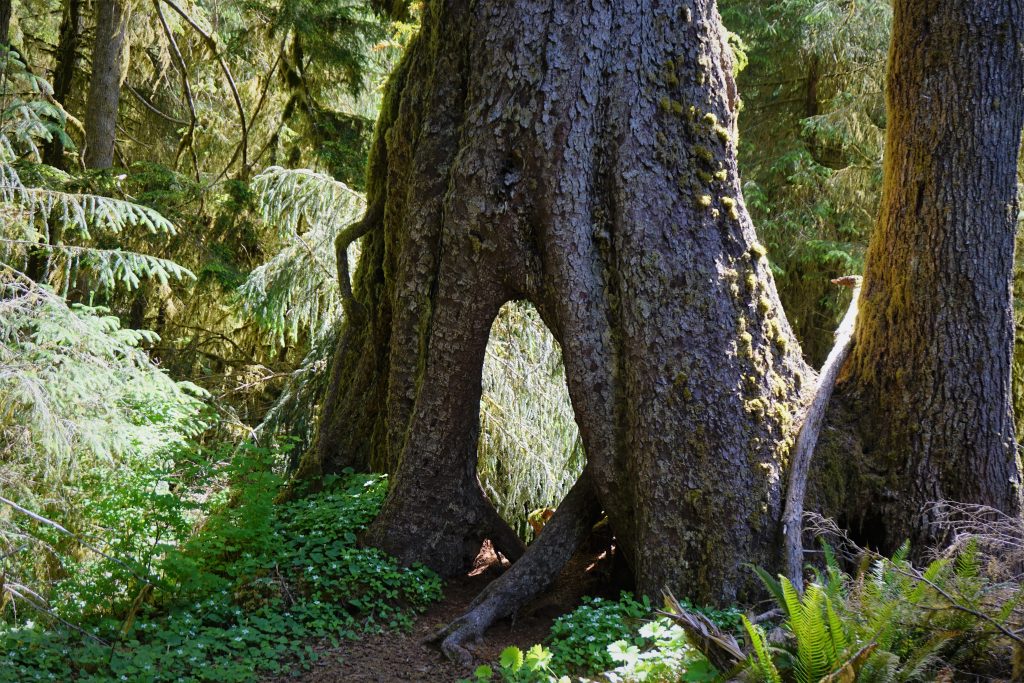
We knew that after 3.2 miles, you would walk through a tree and then follow some faint trails off into the woods. We crossed a marshy area before the trails petered out. At first, we did not know where the famous red rock was, but eventually Daniel found it, realizing we had walked right past it! This rock marked the “one square inch of silence” that the author wrote about. The spot was not anything more special than any other in the Hoh Rainforest or really many throughout Washington, but I guess that goes to show how lucky we are to live in such a beautiful part of the world.
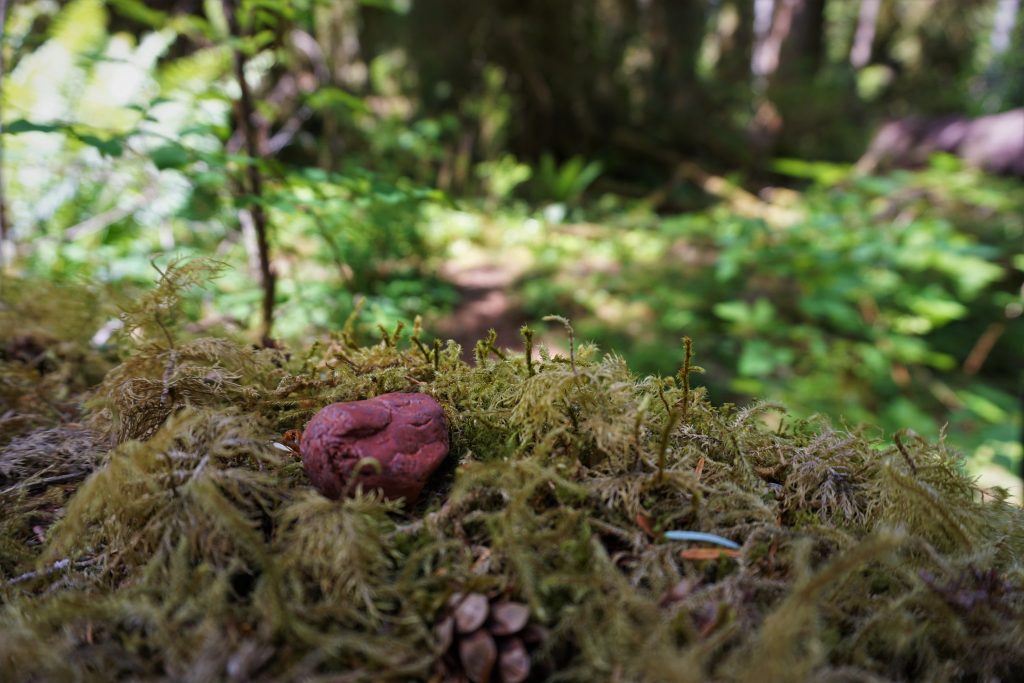
Back on the trail, we really cruised for a few miles. In some places, the rainforest was like an archway of green, but in others it opened up to nice lowland meadows.

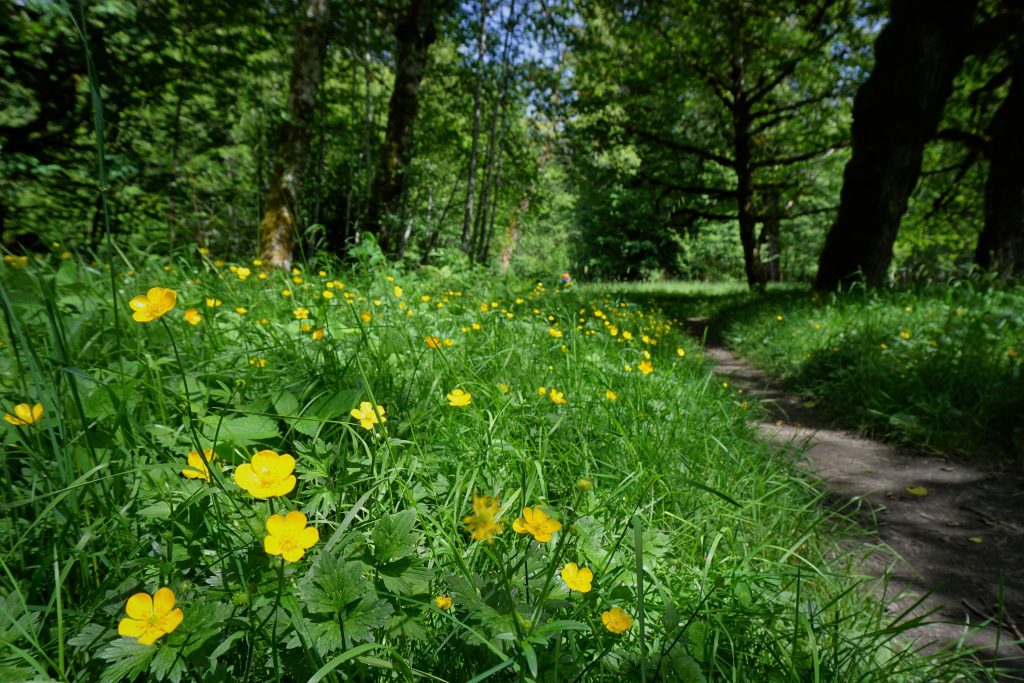

Past the Ranger Station at mile 9, the valley started to narrow and the river picked up velocity. We passed one particular spot where the river was flowing well, creating wonderful rapids of turquoise. We took a break here, entranced by the vivacity of colors around us.

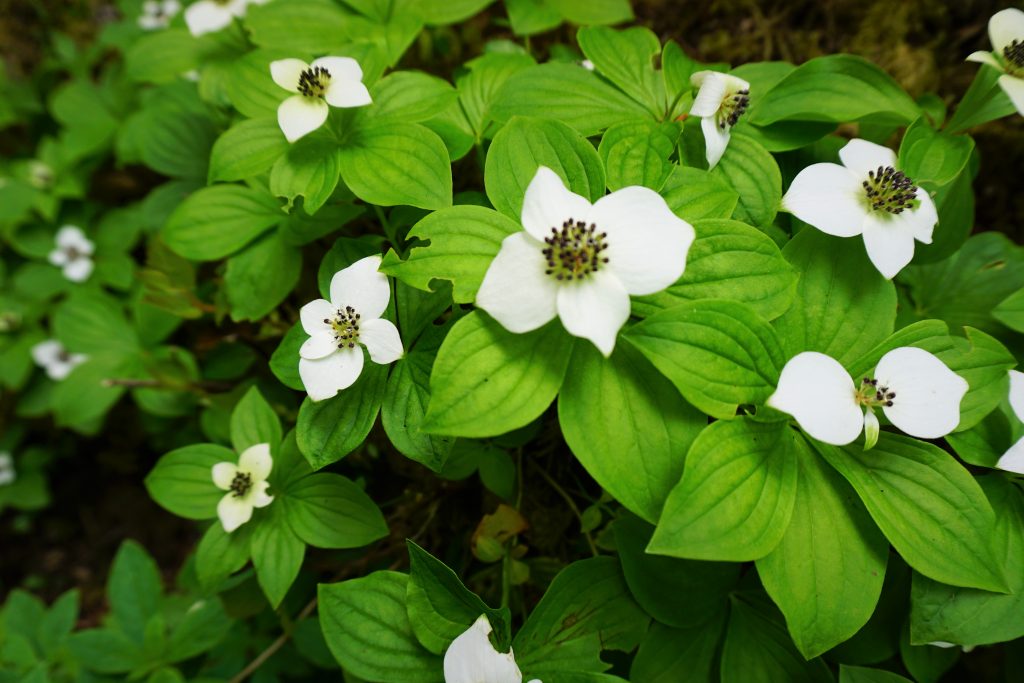
A little past here, the trails diverged and we took the right branch, which climbed a little before descending suddenly back to the river. We crossed this wooden bridge hundreds of feet above the Hoh River in a narrow slot canyon. The river roared beneath our feet, undampened by the foliage around us. It was breathtaking to look down beneath our feet and feel the power of the melting snow and glaciers rushing towards the sea.

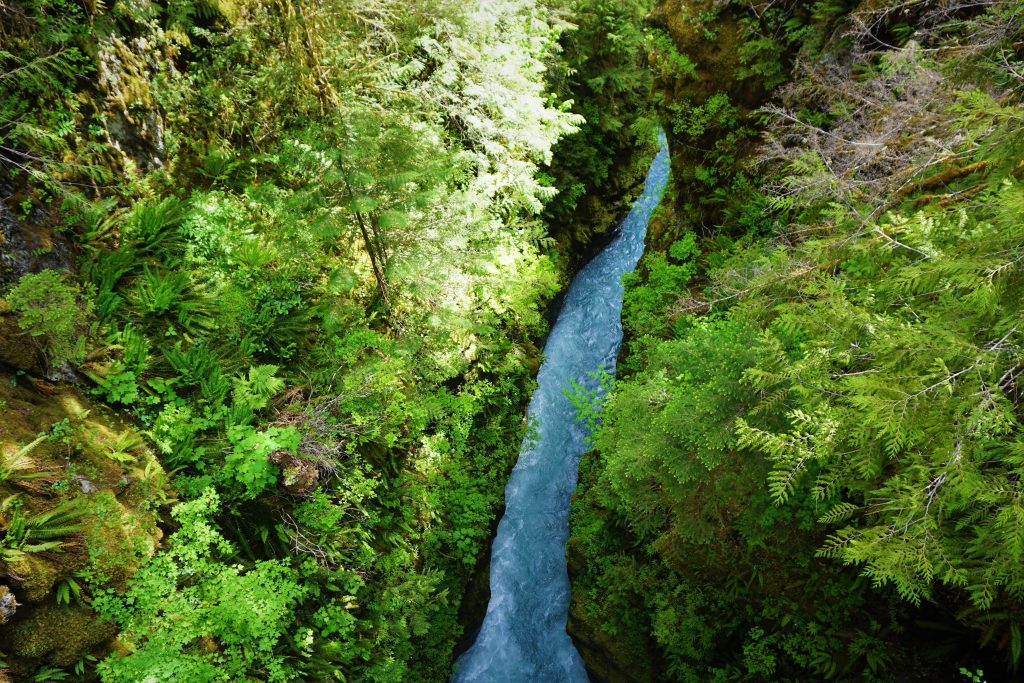
We were 13 miles from the trailhead, but still had 3000 ft of gain to reach our camp for the evening! The real uphill began here on rocky, but generally good trail. It was muggy and hot in the afternoon and Daniel kept complaining about sweating.
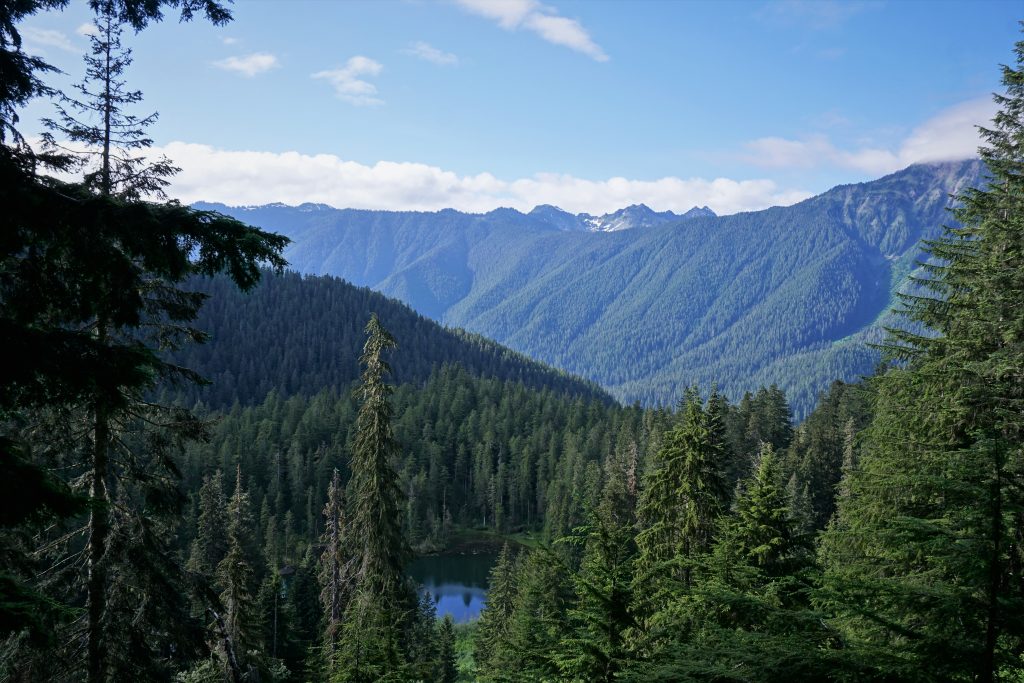
Above Elk Lake, the trail really began to change character. The hillside became increasingly steep and treacherous. We imagined what it would have been like to be the first explorers of Olympus, schwacking through these impossibly steep forested hillsides with cliffs sprinkled in for good measure. Across the valley, we heard the distant thunder of dozens of waterfalls. The peaks floated in and out of the puffy clouds, leaving ambiguity in size of their summits, but the whole valley felt huge and wild.
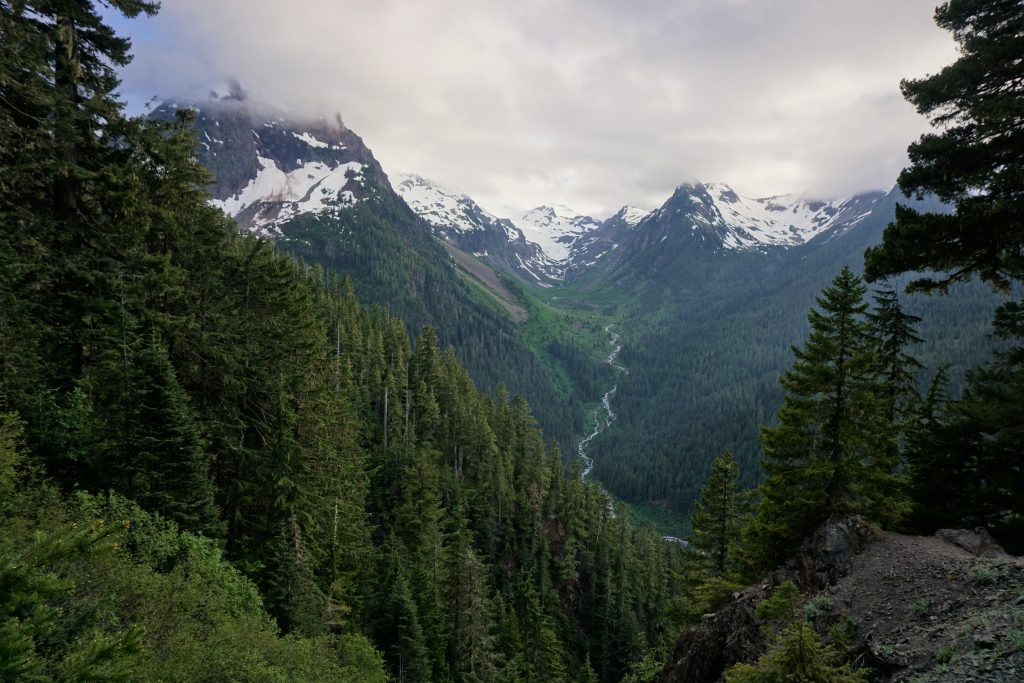
Suddenly, we rounded a corner and the trail disappeared in a large washout. We saw a rickety wooden ladder and fixed rope in place heading down. We figured this must be the ladder part. It was kind of falling apart with broken steps, but it was sufficient to get down the steep, unstable slope safely.
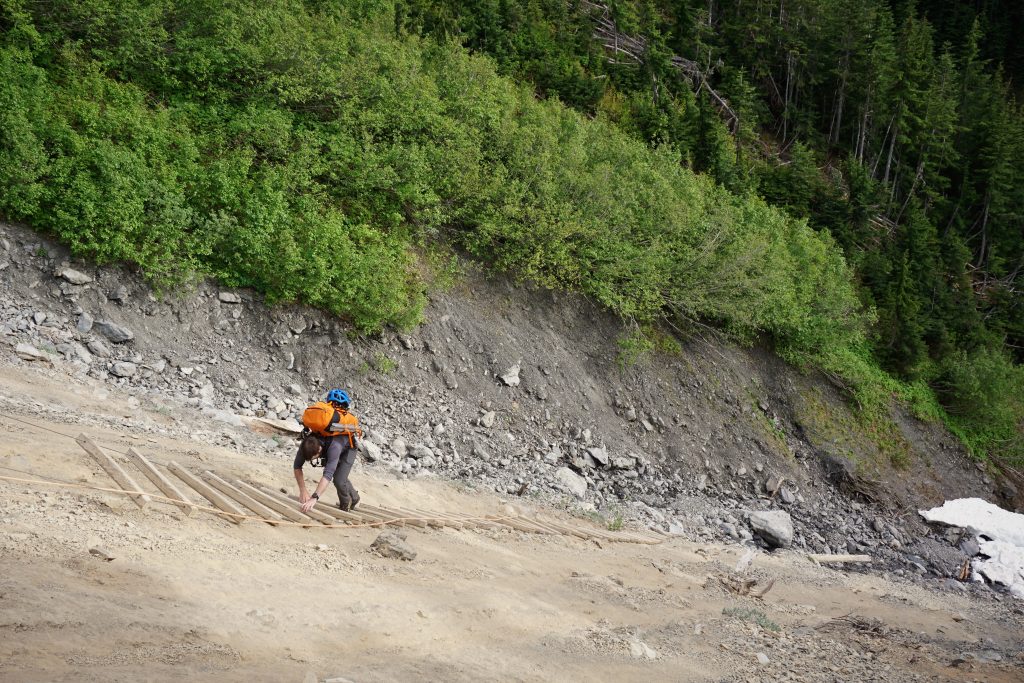
Beyond the ladder, it was a short hike to the Glacier Meadows campsites, which we discovered are actually neither on a glacier nor in meadow. Rather, it is just a forested area with some flat spots. We had hiked 17 miles and 4000 ft gain and we still could not see Olympus! Oh well, it was a nice quiet campsite so we set up our tent, ate some delicious mashed potatoes, and settled in for some rest.
The Glaciers
We woke up the next morning around 5 am and were on the move before 6. Above the camp, the trail started to finally climb out of the trees and we got our first unobstructed views across the valley.
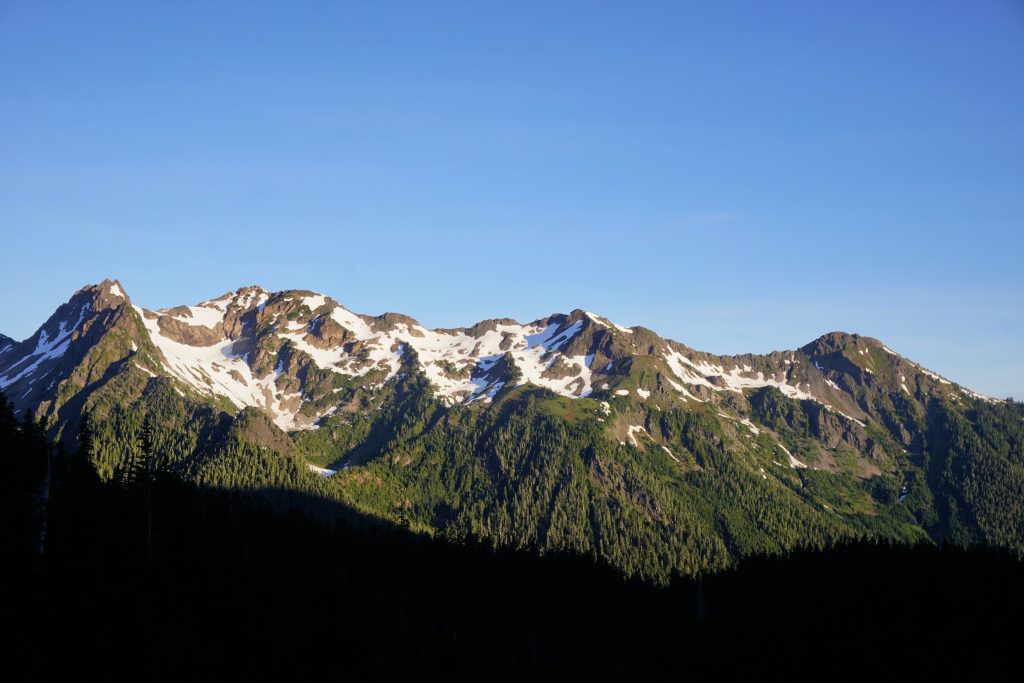
The trail continued up across a few small snowpatches (which bizarrely, had fresh crampon tracks) to the top of the lateral moraine. Suddenly, we were confronted with the massive Blue Glacier sprawling down valley 500 ft below us and the upper glacier spilling off the upper reaches of the Olympus Massif. The entire cirque was simply massive, unlike anything we had ever seen before. We could literally feel the power of this river of ice flowing through the icefalls and down the valley.


As we stood atop the lateral moraine, we realized the incredible duality of this landscape: behind us was dense, old growth forest and in front of us lay one of the largest glaciers in the contiguous US. We were crossing a threshold from the rainforest to the alpine in a matter of minutes. I had never before experienced such a striking contrast in landscapes.

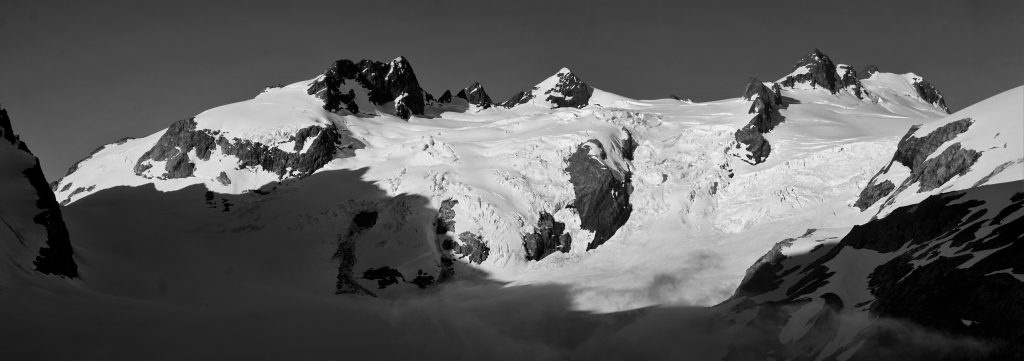
It appeared that getting down the lateral moraine could be a challenge. It was very steep and unstable, the kind of hillside where you could easily trigger a large rockslide and get swept along. As the glacier recedes more and more, this descent will become longer and more difficult. We decided to check out far left since there seemed to be a boot path that direction. Sure enough, we found a cairned trail that led down to a fixed rope through the steepest section (some nice class 5 dirt). The fixed rope appeared to just be tied off to some precarious boulders, but it seemed good enough.
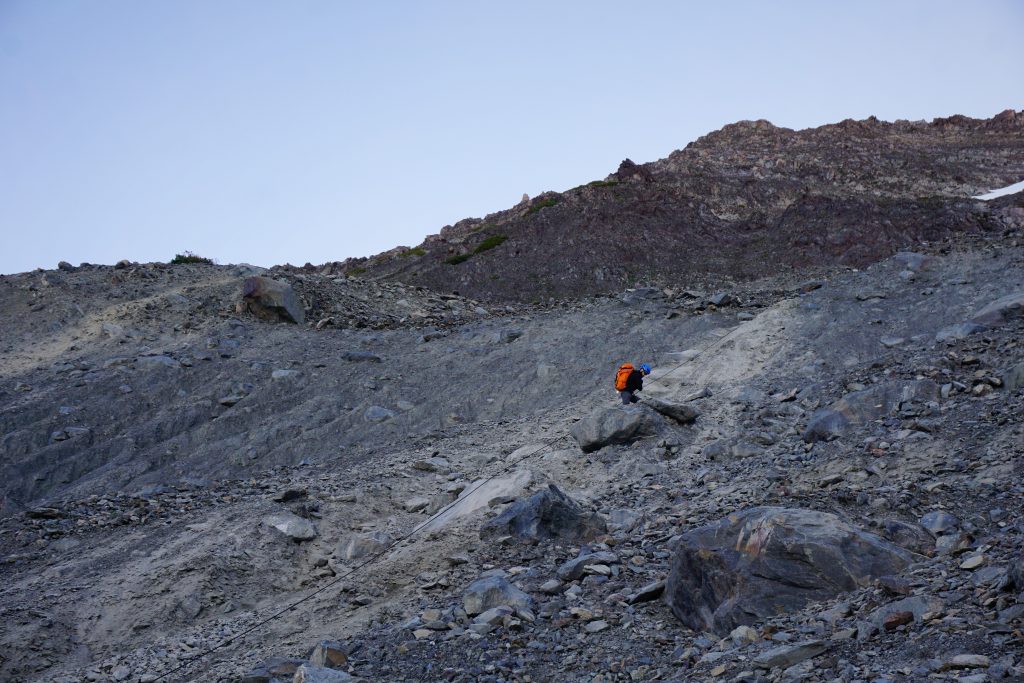
Once on the glacier, we roped up and started walking across. It was flat and minimally crevassed, so we moved quickly, although the distances were very large. It felt both great and blinding as we entered the sun on the far side.


Instead of going up through one of the nasty icefalls, the route takes a right turn and climbs up snow and rock slopes to the top of Snow Dome, a high plateau just northwest of Olympus. You can actually camp up here, but it is quite a haul.
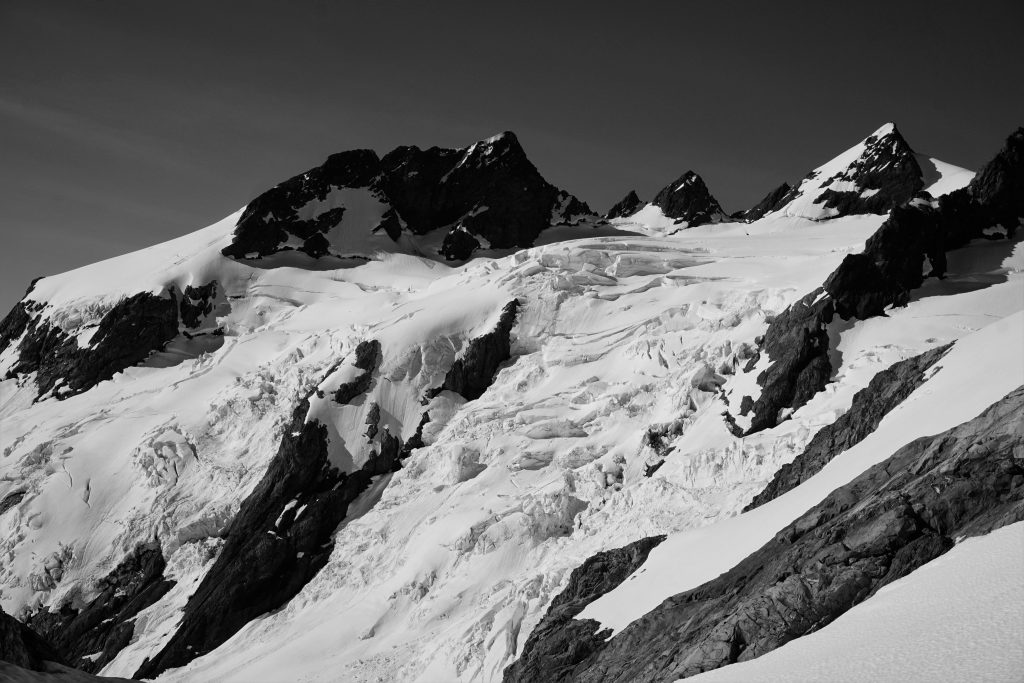
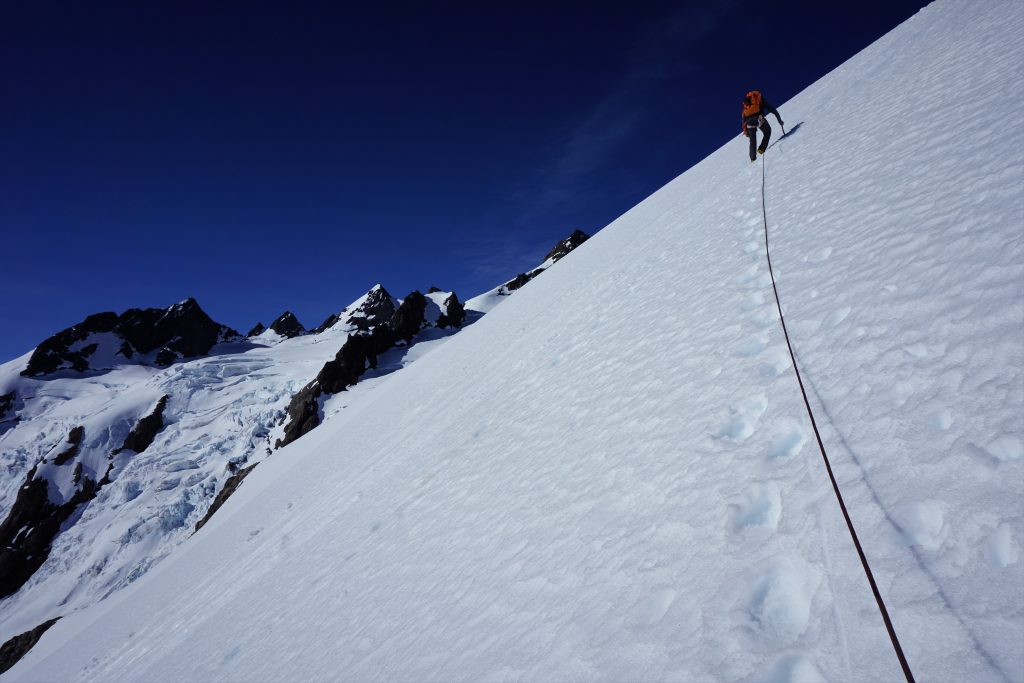
The snow was already softening more than we hoped for, making for annoying post holing. We were talking and agreed on probably passing on the Olympus Traverse, which involves summiting the Middle and East Peaks also.
Once atop Snow Dome, we had expansive views in all directions. We took a break atop this massive flat football field of snow to soak in the views, from the mighty Olympus Massif all the way to the cloud-covered Pacific Ocean.
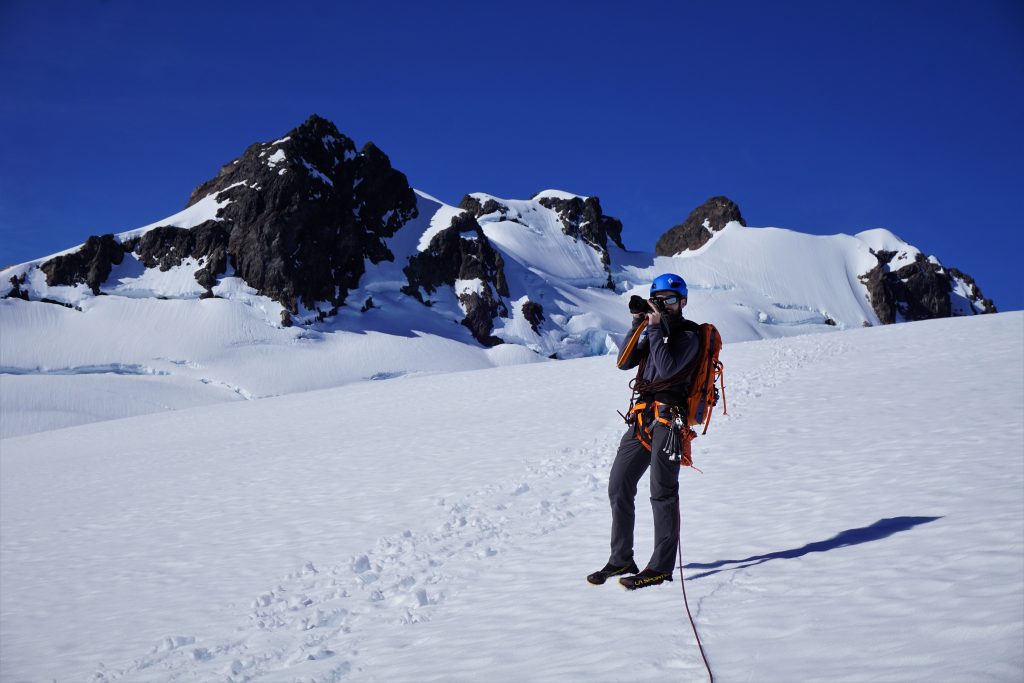

Peaks floating on clouds.

We reentered modestly crevassed terrain on the upper Blue Glacier, heading straight towards the true summit. Later in the season, you might have to take a more circuitous route due to the bergschrund, but we were able to go right by the bergschrund to the summit block. The crack was pretty large, but seemed to have a solid snow bridge across.
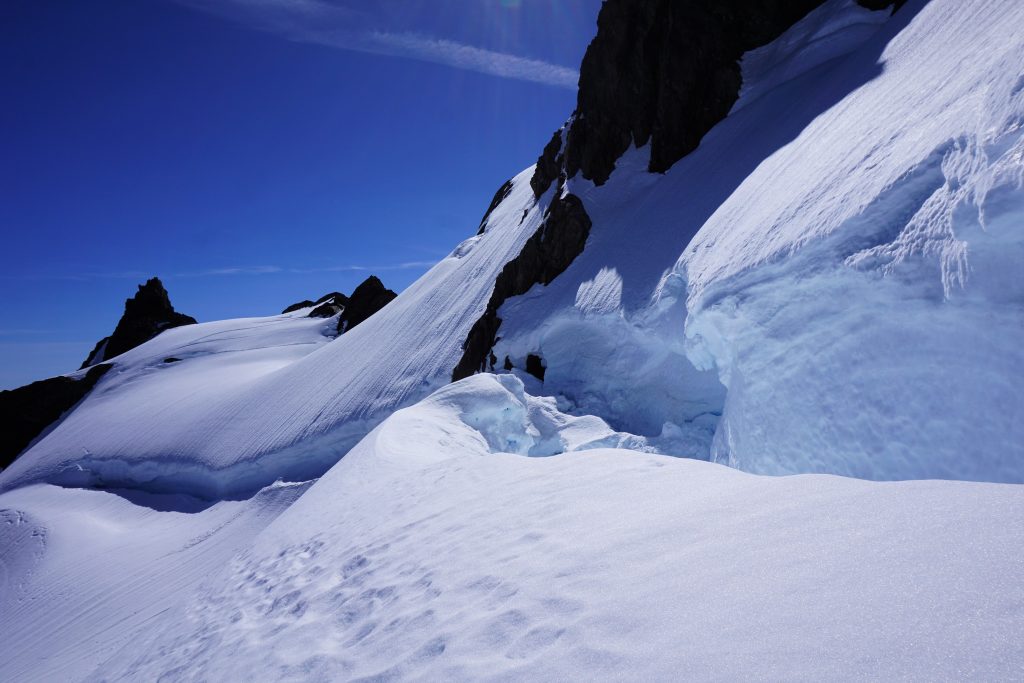
After passing the bergschrund, we finally caught up with the only party ahead of us. They were racked up and ready to go for the summit block. We let them climb and then followed them up to the base of the North Face of the summit block. Supposedly this route was 5.2-5.4, but the main challenge definitely appeared to be discerning which chossy holds could be trusted. Gotta love that Olympic rock!
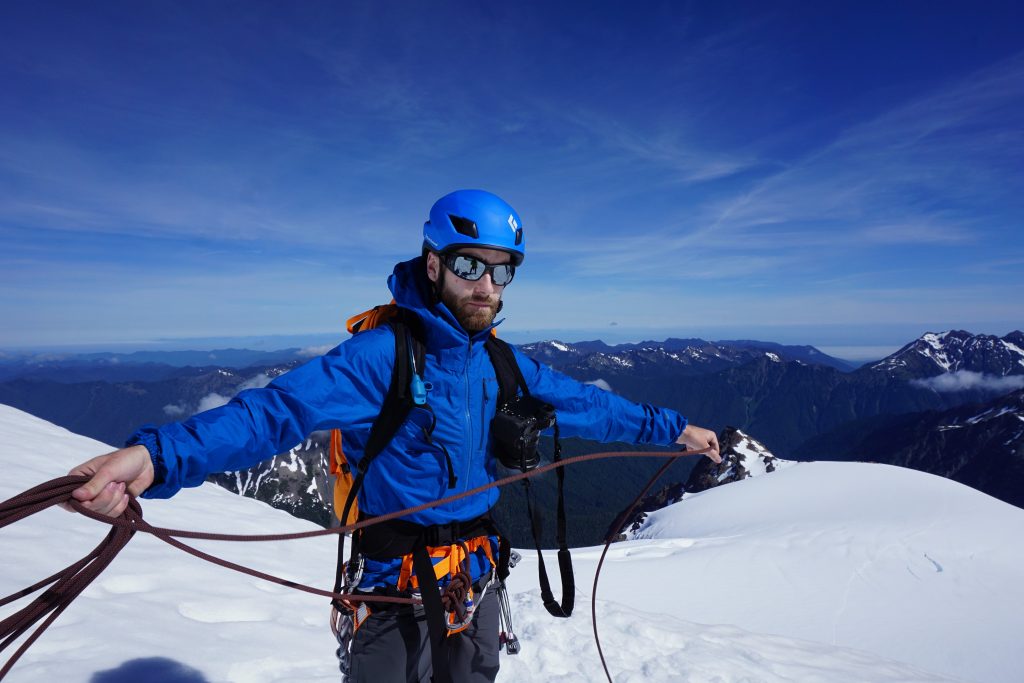
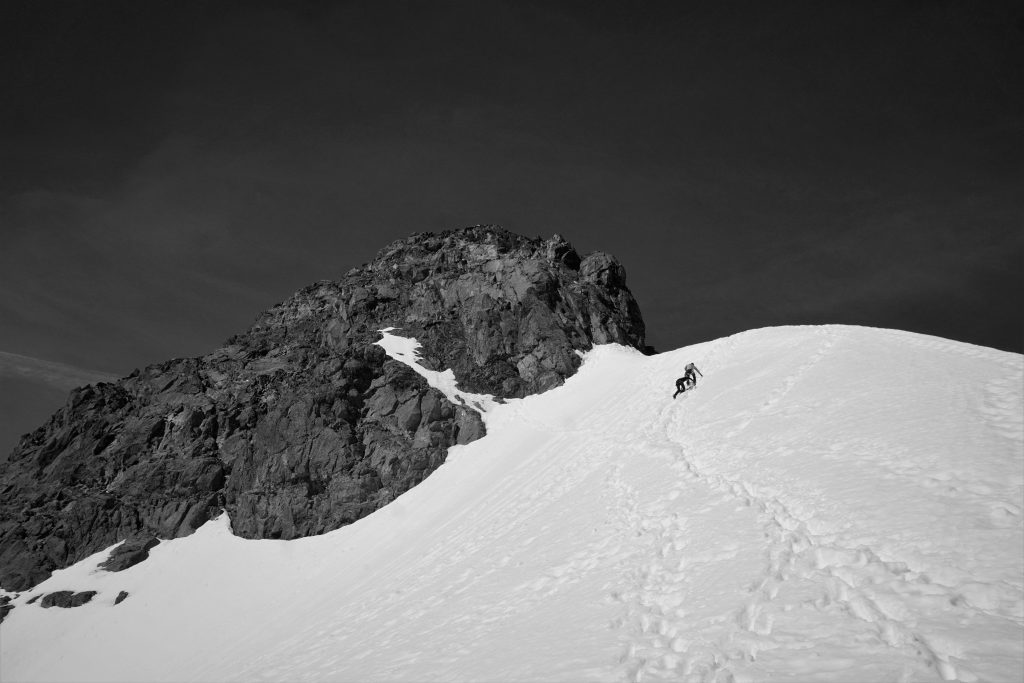

Daniel led the 25m pitch, clipping a few slings and placing one questionable nut. I followed quickly up it. Although the rock appeared very untrustworthy, nothing too big became dislodged. From there, it was a short little scramble to the true summit of Olympus!


The entire Olympic Mountain Range unfolded before us, with huge glaciers and sprawling forests. Clouds flooded the southern and eastern valleys, leaving us almost on an island. Baker and Rainier floated above the distant peaks and clouds, the only visible Cascade Peaks. To the north, we could see the Straight of Juan de Fuca and Vancouver Island. And to the west, the vast Pacific Ocean. There was something unique about staring off into the vastness of empty ocean. Although Olympus is not even 8000 ft, its summit views are as good as any in Washington.


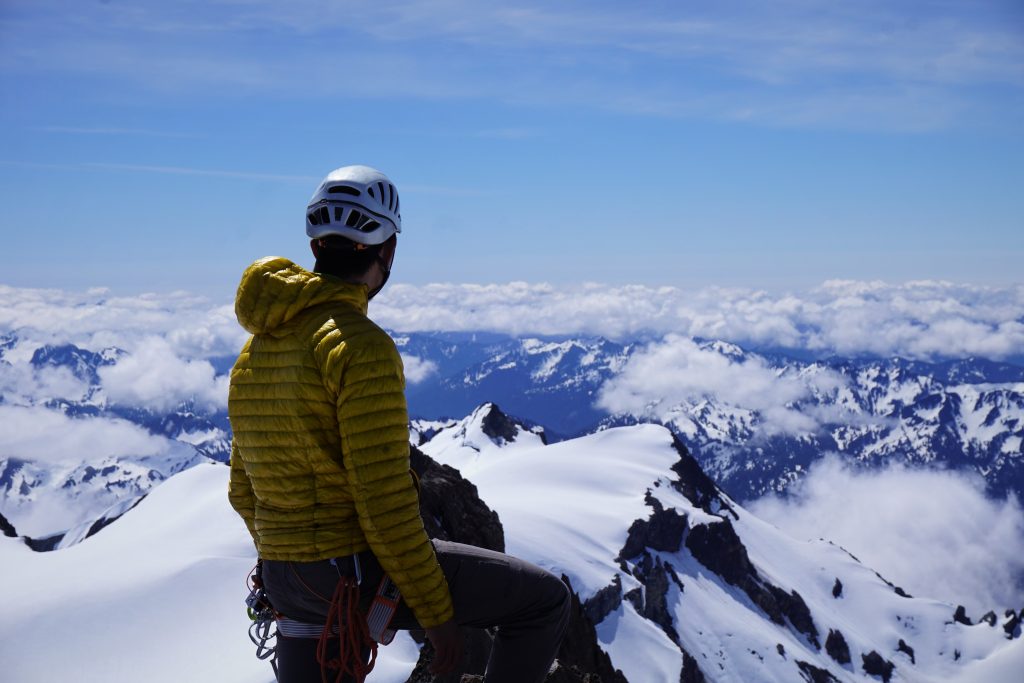
Standing above the clouds, we seemed so removed from that former world of green, trees, and water. So far from that vexing world of emotions, frustration, and confusion. It was so peaceful.
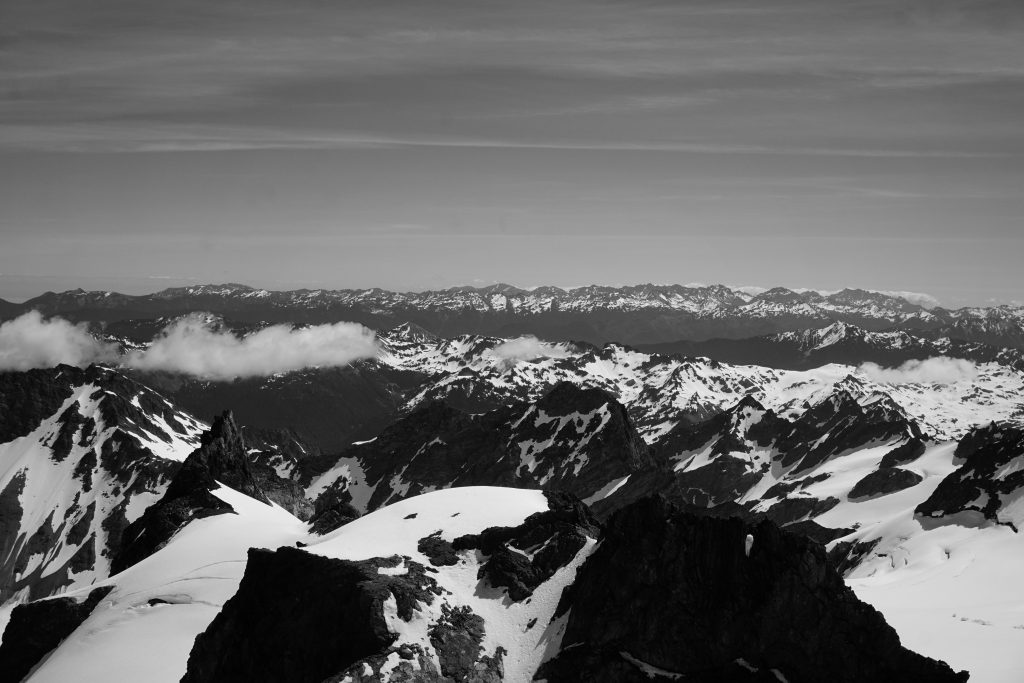
We were able to rap off the summit with our 50 m rope and then we began reversing the entire 23 miles it took to get to the summit!
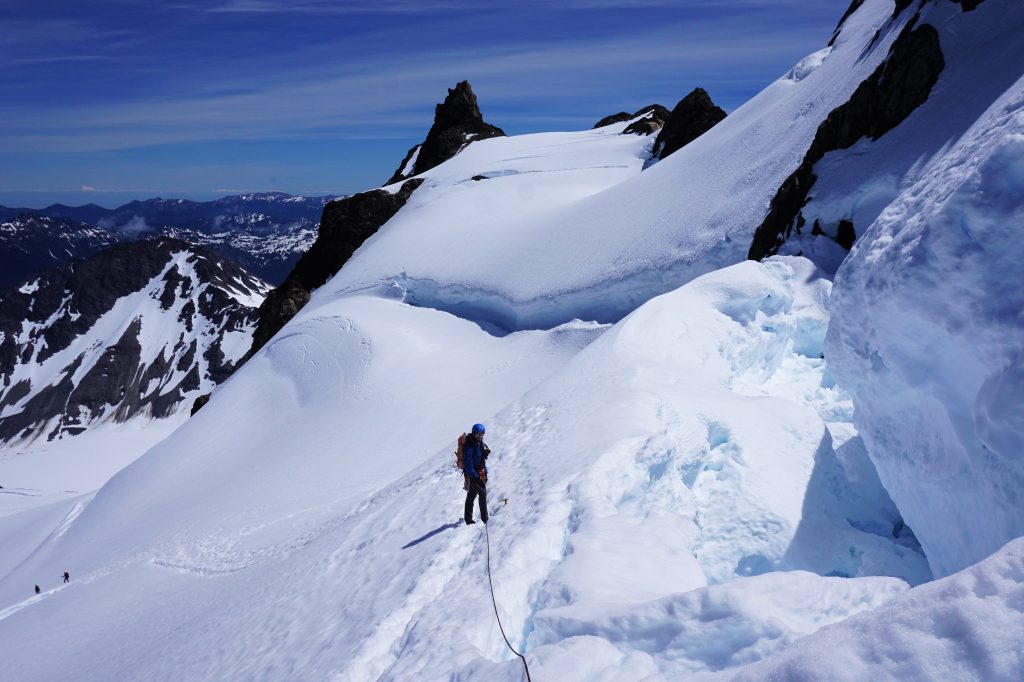
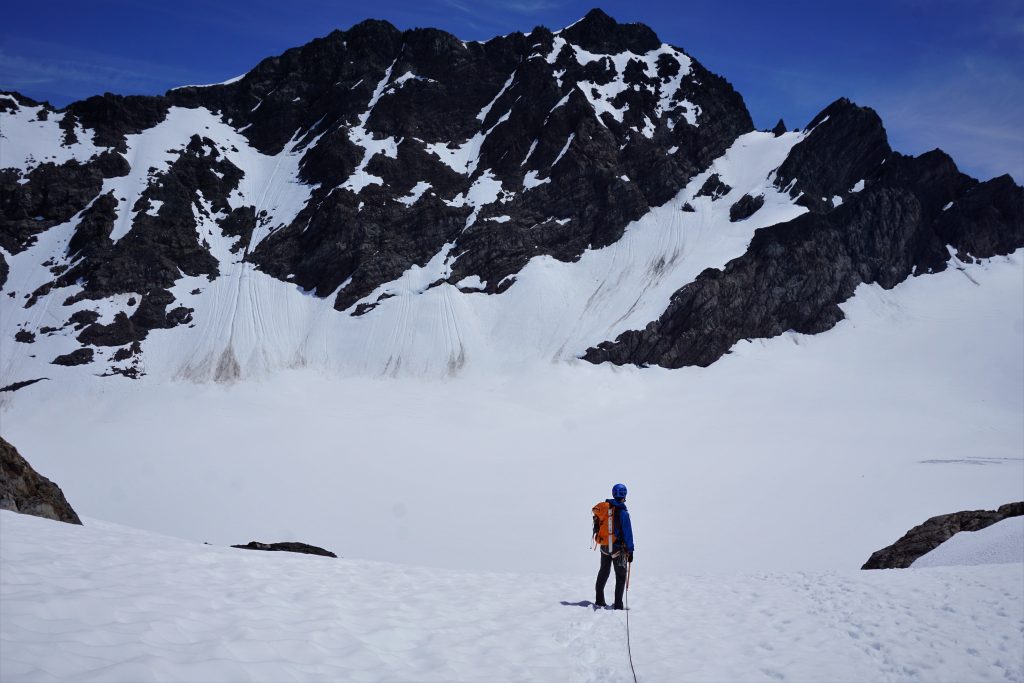
Once again I was reminded that my old pair of La Sportiva Crossovers are no longer waterproof as we jogged down through mushy mushy snow. There were a few solid boot skis, but it was mostly too mushy for that.
Back at the lateral moraine, we ascended the fixed rope and hiked back to top of the lateral moraine. High cirrus clouds had started to form behind Olympus, creating a beautiful backdrop to the Blue Glacier. We took a break here to dry our feet off and appreciate the mighty glaciers one last time.
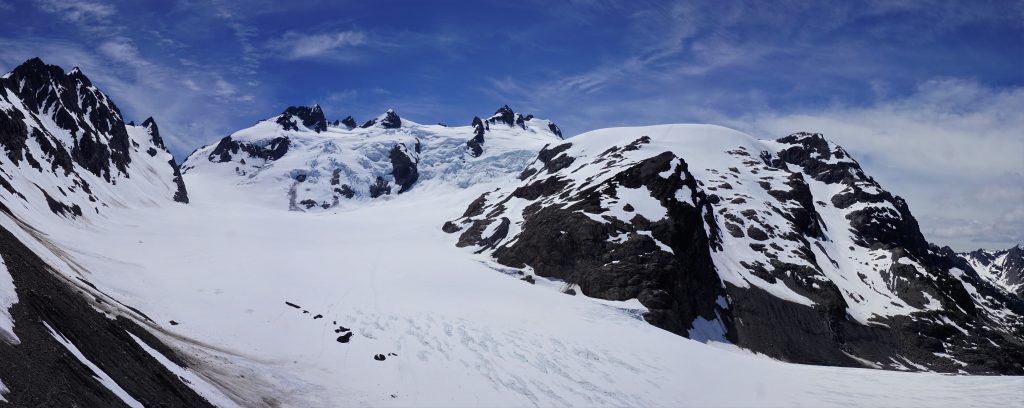


At the end of the trail, we met a National Park ranger. He observed our matching La Sportiva Crossovers and commented that we must be “going light”. We also learned that, much to the frustration of this ranger, the National Park does nothing to maintain much of these trails like the ladder before Glacier Meadows and this fixed line to get down to the moraine. Hopefully people continue to maintain these portions themselves to keep the approach to Olympus accessible and safe!
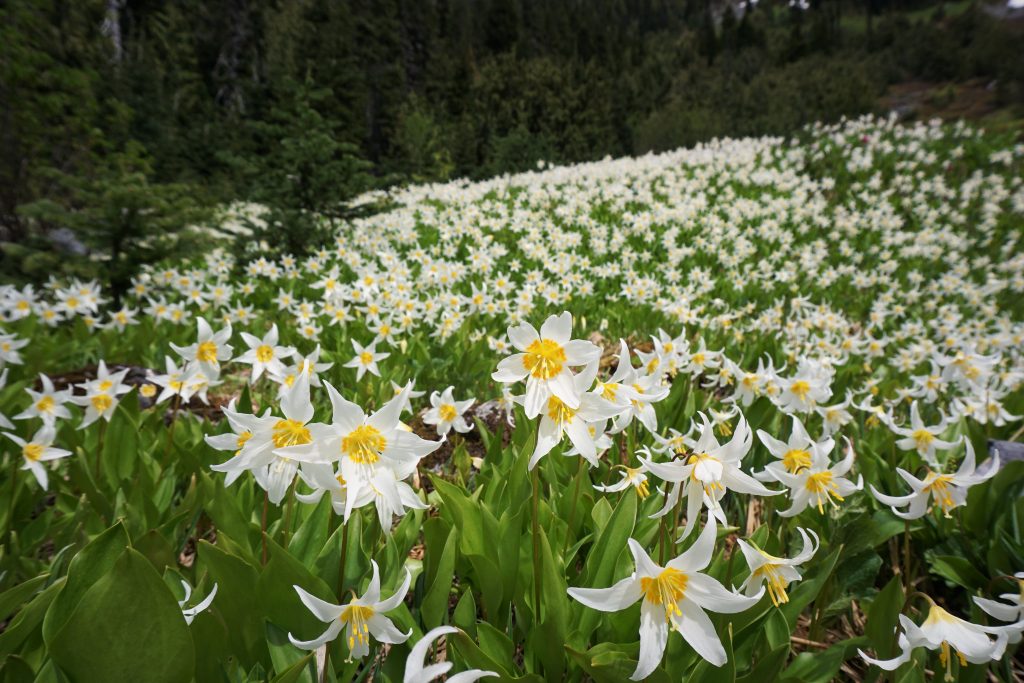
The River
We arrived back at our camp in the early afternoon and decided to get ahead on the descent and start hiking out. So we said goodbye to the alpine and plunged back into the Hoh Rainforest.
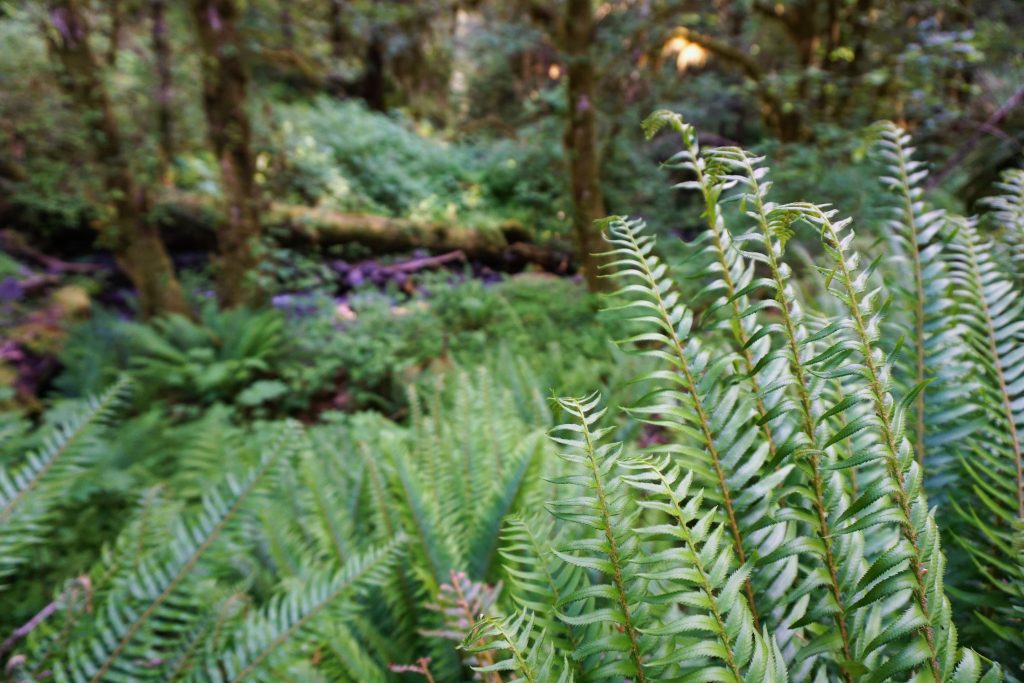
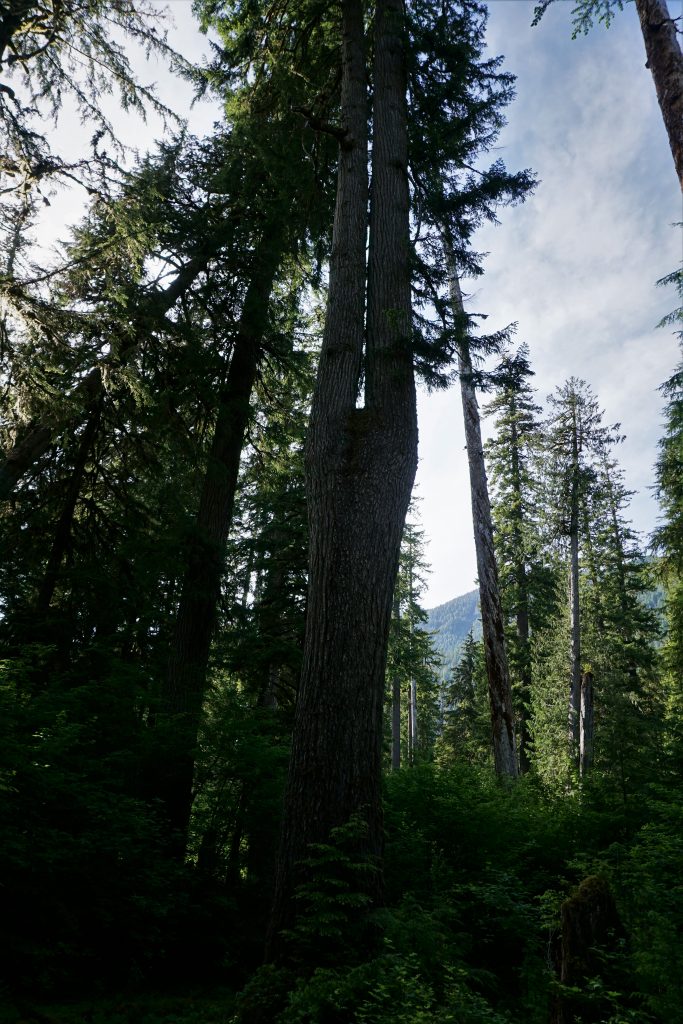
We covered about half of the distance back to the car by evening and made camp near the Ranger Station 9 miles out. We walked towards the Hoh River and found an idyllic campsite on a gravel bar right next to the beautiful river. After a tasty cous cous dinner, we walked out onto the sand barefoot, stretching and chatting.

The soft evening light bathed the undersides of the clouds, contrasting with the turquoise river color. The cackling of the river drowned out the voices inside my head. And for the first time in many months, I actually felt at peace with my life – not necessarily happy with it, but at least accepting of what has happened, as disillusioning and unfair as it feels. Being here, in a place that is wild yet serene, with a close friend who knows me and understands what I am going through, I felt like I was turning a page. All along I had been looking for answers in the mountains, but it is the rainforest that has given me the most healing. Through the most painful moments, I have become a much wiser, mature, and appreciative person. We learn so much more through our failures than successes, both in life and in the mountains. Suffering is the vehicle through which we find the greatest happiness.
The next morning was equally beautiful, with moody clouds drifting in and out fo the mountainsides. The green brushy hillside had interesting snags throughout, remnants of a wildfire from the 1970s.

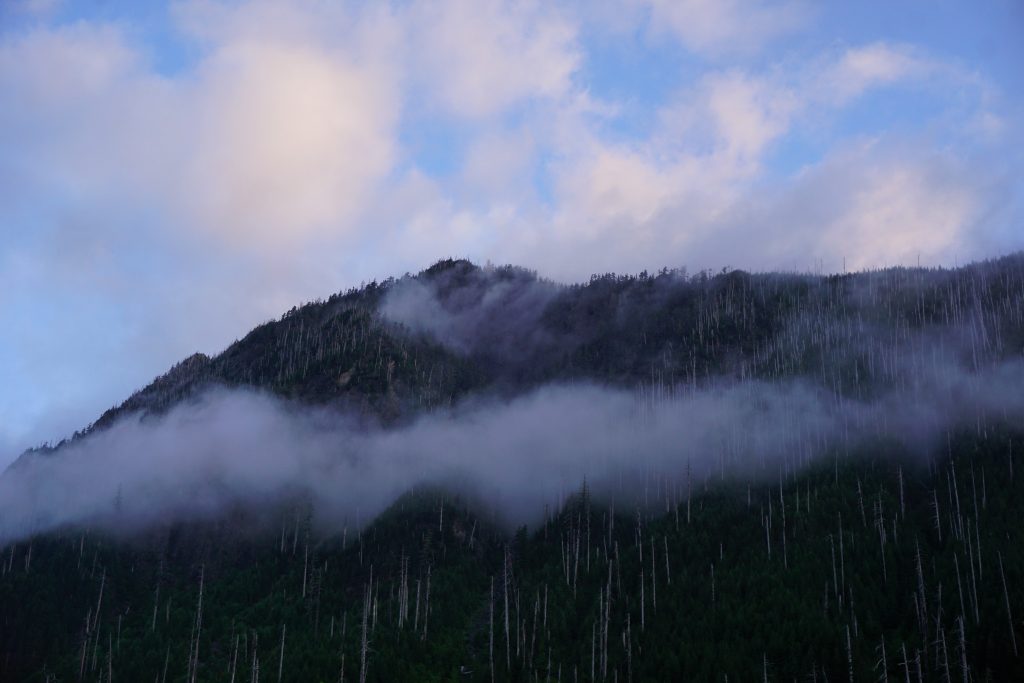
It was an easy morning, hiking 9 miles back to the car. We arrived back at the car at 10 am, nearly 48 hours after leaving the car! So while we spent two nights and three days out, we “technically” completed the climb of Olympus in just two days, even at a leisurely place!
The Ocean
Since we had to drive back to the coast before driving home, we pulled over at one of the beaches and walked down to the shore. It was a sunny, beautiful day on the coast. Daniel remarked he had never been to the coast on a sunny day. We kicked off our sandals and put our feet in the cool Pacific Ocean.
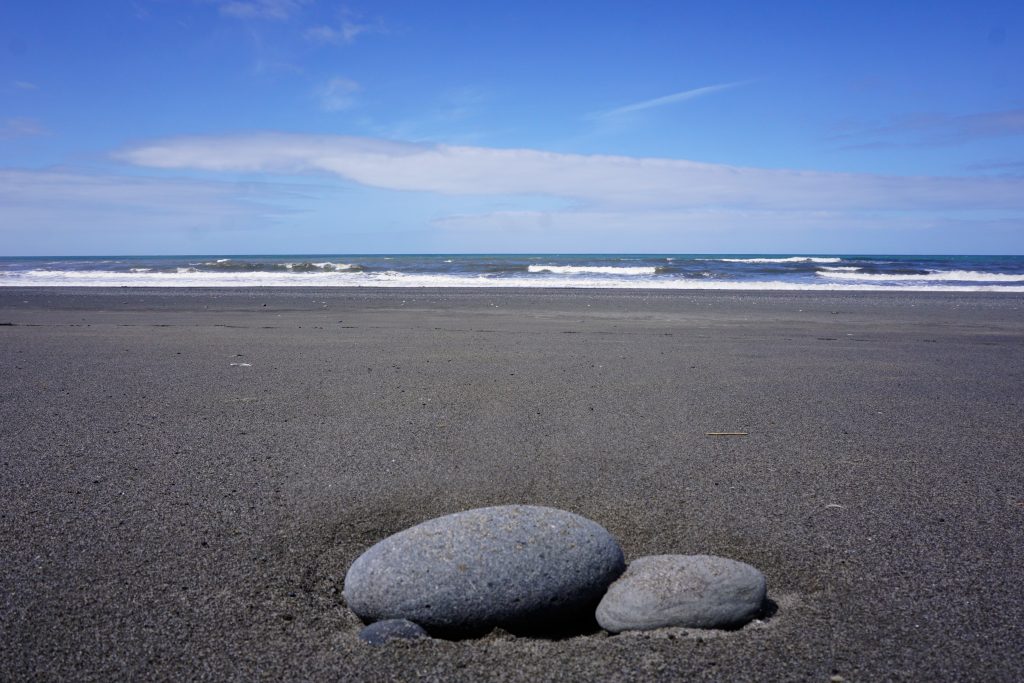
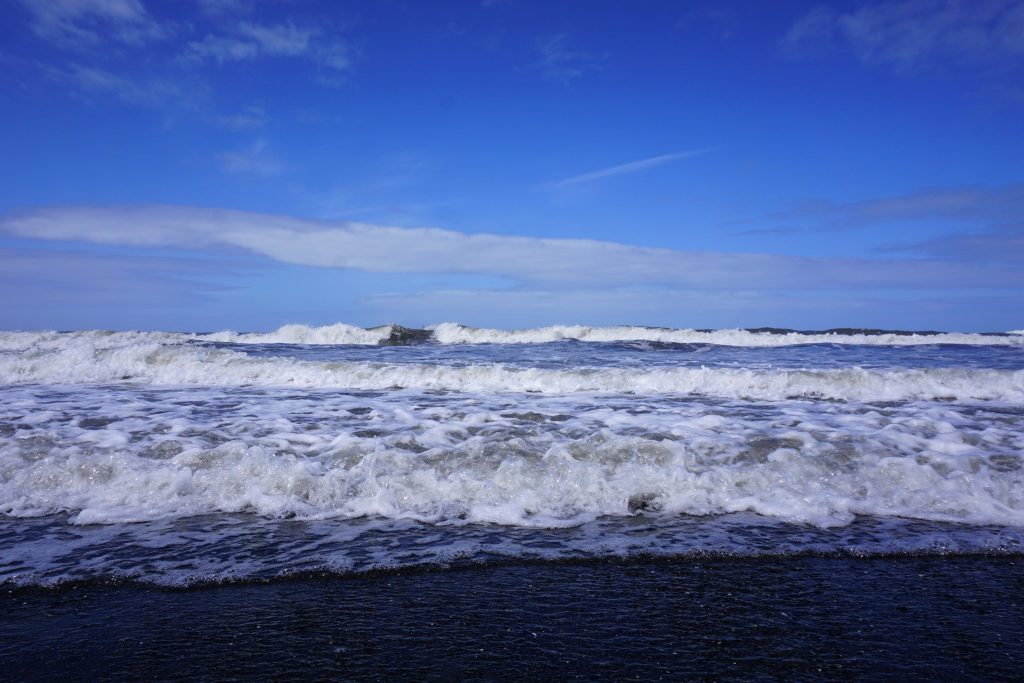
It was only fitting to finish our trip with our feet in the ocean. From glacier to rainforest to ocean, we followed the path of the water, the hydrological cycle that defines this unique part of the world. At points it hardly moves for decades, but at other points it moves swiftly. Regardless, it moves with an undeniable direction and purpose. Life moves on and there is no going back.
Daniel and I agree that Mt. Olympus is one of the most beautiful and diverse climbs we have ever experienced. What keeps the crowds away – the long approach – is exactly what draws us in. This trip was exactly what I needed: relaxing, remote, and powerful. Thank you to Daniel for joining me on this special trip!
